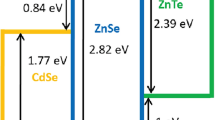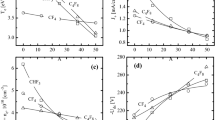Abstract
To reduce the levels of impurities such as water, oxygen and nitrogen in a plasma chamber, we evaporated and deposited carborane (C2B10H12) powders on a silicon substrate by using a glow discharge method, and investigated the effects of boronization as functions of the carborane temperature and the rates of the flowing gases between deuterium and helium. The reduced amount of impurities after boronization was estimated by measuring the partial pressures of the corresponding gases in the chamber and the concentrations of nitrogen and oxygen in a deposited carborane film. The ratio of deuterium to hydrogen in the deposited film was analyzed by using secondary ion mass spectrometry (SIMS). When carborane powders were evaporated under a deuterium atmosphere, the residual gas analyzer showed a significant decrease in the partial pressure of water while less change was noted from the partial pressures of nitrogen and oxygen. The most efficient removal rate for water was obtained when carborane powder was flown under deuterium atmosphere at 150 °C. The SIMS data showed higher concentrations of nitrogen and oxygen in the carborane films deposited on Si substrates under a deuterium atmosphere, demonstrating that boronization under a deuterium atmosphere is an effective method to remove impurities.
Similar content being viewed by others
References
A. Refke, V. Philipps, M. Erdweg, E. Vietzke and J. von Seggern, J. Nucl. Mater. 212–215, 1255 (1994).
S. Higashijima et al., J. Nucl. Mater. 220–222, 375 (1995).
C. H. Skinner et al., Nucl. Fusion 42, 329 (2002).
J. Winter et al., J. Nucl. Mater. 162–164, 713 (1989).
T. Nakano, S. Higashijima, H. Kubo, J. Yagyu, T. Arai, N. Asakura and K. Itami, J. Nucl. Mater. 313–316, 149 (2003).
A. Sykes et al., Nucl. Fusion 41, 1423 (2001).
J. Li et al., Nucl. Fusion 39, 973 (1999).
X. Gao et al., J. Nucl. Mater. 390–391, 864 (2009).
D. Tafalla and F. L. Tabares, Vacuum 67, 393 (2002).
C. H. Wu, L. X. Shi, Q. N. Li, J. Zhao, M. Selke, H. Yan and X. M. Wang, J. Nanosci. Nanotechnol. 11, 3091 (2011).
G. L. Jackson et al., J. Nucl. Mater. 196, 236 (1992).
J. H. Yuan and K. M. Liew, J. Nanosci. Nanotechnol. 12, 2617 (2012).
P. Antoniammal and D. Arivuoli, J. Nanosci. Nanotechnol. 12, 993 (2012).
R. J. Zaldivar, R. W. Kobayashi and G. S. Rellick, Carbon 29, 1145 (1991).
A. Ganzalez-Campo, B. Boury, F. Teixidor and R. Nunez, Chem Mater. 18, 4344 (2006).
Author information
Authors and Affiliations
Corresponding author
Rights and permissions
About this article
Cite this article
Lee, S., Kim, J. Impurity reduction in a plasma by using the deuterium and helium glow discharge method. Journal of the Korean Physical Society 66, 465–469 (2015). https://doi.org/10.3938/jkps.66.465
Received:
Accepted:
Published:
Issue Date:
DOI: https://doi.org/10.3938/jkps.66.465




